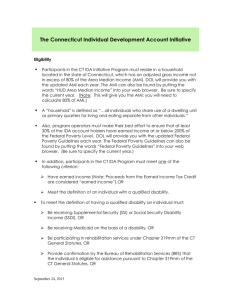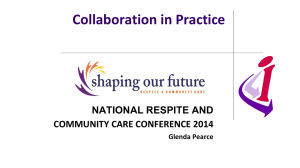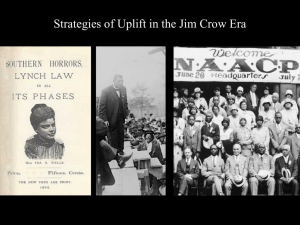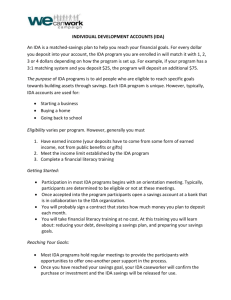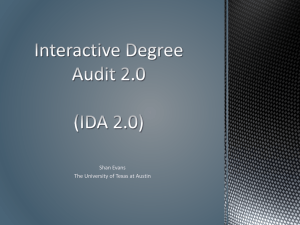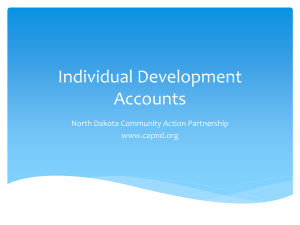Insert - Connecticut Housing Trust Fund IDA Program
advertisement
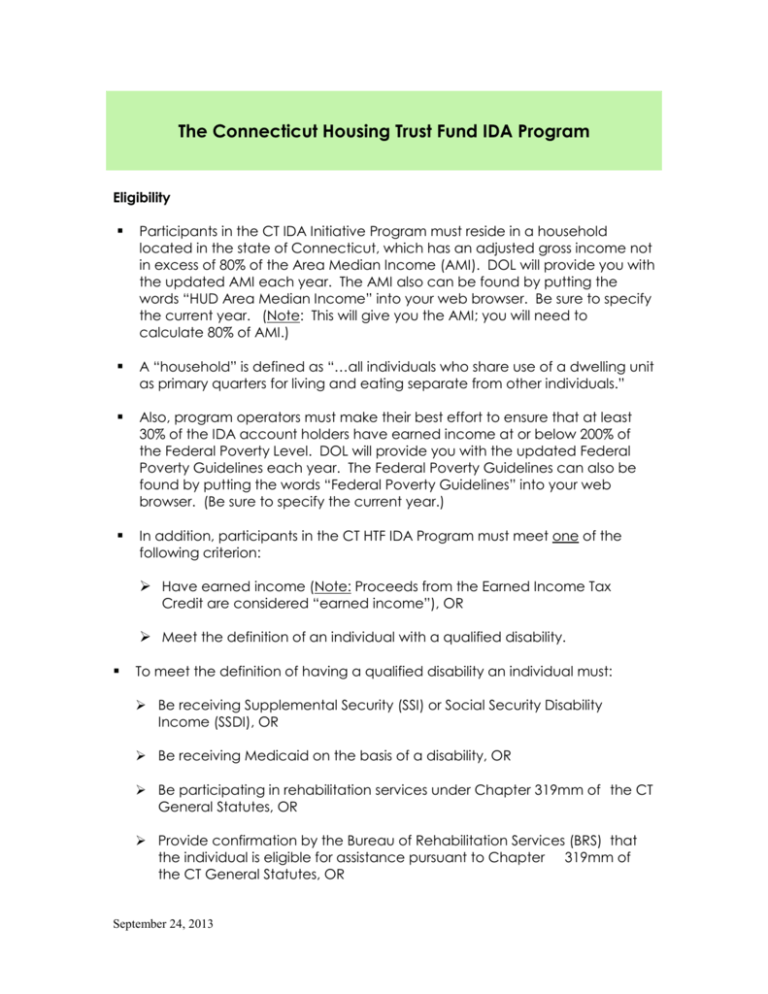
The Connecticut Housing Trust Fund IDA Program Eligibility Participants in the CT IDA Initiative Program must reside in a household located in the state of Connecticut, which has an adjusted gross income not in excess of 80% of the Area Median Income (AMI). DOL will provide you with the updated AMI each year. The AMI also can be found by putting the words “HUD Area Median Income” into your web browser. Be sure to specify the current year. (Note: This will give you the AMI; you will need to calculate 80% of AMI.) A “household” is defined as “…all individuals who share use of a dwelling unit as primary quarters for living and eating separate from other individuals.” Also, program operators must make their best effort to ensure that at least 30% of the IDA account holders have earned income at or below 200% of the Federal Poverty Level. DOL will provide you with the updated Federal Poverty Guidelines each year. The Federal Poverty Guidelines can also be found by putting the words “Federal Poverty Guidelines” into your web browser. (Be sure to specify the current year.) In addition, participants in the CT HTF IDA Program must meet one of the following criterion: Have earned income (Note: Proceeds from the Earned Income Tax Credit are considered “earned income”), OR Meet the definition of an individual with a qualified disability. To meet the definition of having a qualified disability an individual must: Be receiving Supplemental Security (SSI) or Social Security Disability Income (SSDI), OR Be receiving Medicaid on the basis of a disability, OR Be participating in rehabilitation services under Chapter 319mm of the CT General Statutes, OR Provide confirmation by the Bureau of Rehabilitation Services (BRS) that the individual is eligible for assistance pursuant to Chapter 319mm of the CT General Statutes, OR September 24, 2013 Provide confirmation of his/her disability by any other agency deemed comparable by DOL. There is no asset test for participation in the CT Housing Trust Fund IDA Program. Allowable Asset Funds may be withdrawn to purchase the following Allowable Asset no earlier than 6 months after the initial deposit by a Participant into their IDA, providing the Account Holder has reached his/her savings goal. Purchase of a Home as a Primary Residence – In the Connecticut IDA Initiative an IDA Participant may use their IDA and matching funds to purchase a ”primary residence,” even if it is not a “first home.” Homes must be purchased within the State of Connecticut, but can be purchased outside of the area where the IDA Program operates. The cost of the home cannot exceed 120% of the average area home purchase price for a comparable residence. It is important that you be aware of the housing market in your area. You will want to steer Participants away from areas where housing prices are depreciating and away from poorly constructed homes that will likely not appreciate in value. Usually a Participant will need more than the savings in their IDA and their matching funds for their down payment on a home. You should research other sources of homeownership assistance and form partnerships with first-time homeownership programs so that these resources can supplement Participants’ IDAs. NOTE: Participants saving for a home must complete the Home Purchase Plan, a copy of which must be included in the Participant’s file before the asset purchase is completed. Match Rate Programs can match up to 2:1, up to a maximum match of $3,000. Therefore, if a Participant saves $1,500 in their IDA they will receive a match of $3,000 for a total of $4,500 for their asset purchase. Be sure to match at the rate that you specified in your original grant proposal. o No more than 2 concurrent IDAs are allowed per household. The maximum total match is $3,000 per individual and $6,000 per household. September 24, 2013 Participants earn interest on the funds that are in their IDAs. This interest must be matched even if this results in a match that exceeds the $3,000 maximum limit. Participants able to save more than the matchable amount over the program duration will have even higher savings to be used towards purchasing their asset, although the maximum match limitation applies regardless of higher personal savings. Any amount above the allowable goal should be deposited into a separate account opened by the Participant in their own name. Maximum Savings Goal Each Participant is encouraged to strive toward a goal of $1,500 in savings in order to receive the maximum allowable match (or $3,000 if the Program is matching $1: $1). Of course, Participants should be encouraged to save as much as is feasible, in order to build their assets faster, although the match limitation will apply regardless of higher personal savings. Any amount above the maximum allowable savings goal should be deposited into a separate account opened by the Participant in their own name. Topics for Asset-Specific Training/Savings Clubs Homeownership Training Preparation for first home purchase Looking for a Home/Home buying process Credit issues Mortgage Application Process Mortgage pre-qualification requirements Mortgage product types First Home Ownership Programs in the Community Legal issues/The Closing Presentations by local realtors Life as a Homeowner Home Maintenance and Repair Foreclosure Prevention Other Topics Tax issues Increasing Your Earning Potential Job Marketability Job Retention and Advancement Dealing with a Difficult Boss Handling Disputes with Co-Workers Asking for a Raise or a Promotion Advocating for Yourself Decision Making Critical Thinking Skills September 24, 2013 Parenting Motivational Issues Stress Reduction and Anger Management Other groups that can be solicited to assist with Financial Education and/or Savings Club presentations are: Housing Finance Authority (CHFA) Non-Profit Housing Agencies/Housing Authorities Lenders/Realtors SBA-funded organizations/SCORE Women’s Business Development Agencies Community Colleges (Business Development of Entrepreneurial Centers) Local Chambers of Commerce Colleges/Financial Aid Representatives Trade Schools/Apprenticeships Job Training Entities/Workforce Development/Career Counselors Industry Associations Banks Cooperative Extension Services You can find experts on many of these topics that might be willing to come talk to your classes. Also, information on many of these topics can be found on the Internet. Serving Individuals Out of Your Service Area You can admit an individual who lives out of your service area into your program, as long as there is not a DOL IDA program with available slots operating closer to where the individual lives. On rare occasions, an individual might live in one town and work in another, and it would be more convenient for them to join an IDA program where they work. This can be permitted, after consultation with DOL and with the program operator in the town where the participant lives. Making Changes to Your IDA Program Plan If you wish to make any changes to the program plan that you specified in your original program proposal, you must first get permission from DOL. September 24, 2013
